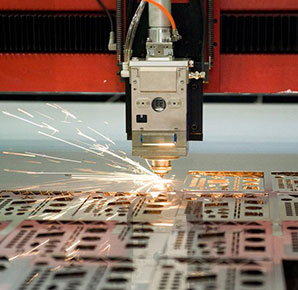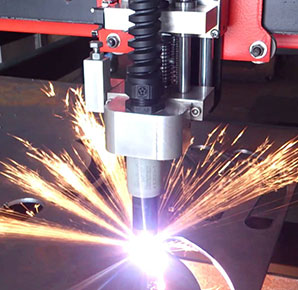
NM400 Wear-Resistant Steel Plates Cutting Method
2019-10-25
NM400 Steel Plate Property Analysis:
NM400 steel plate is a kind of heat-treated steel plate. Like most wear-resistant steel plates on the market, it is heated to a certain temperature. When the temperature is above 300 degrees, the hardness will drop rapidly. Therefore, when cutting, the wear plate should use cold cutting as much as possible, otherwise the problem of cutting hardness drop will occur.

NM400 wear-resistant steel plates are heat-treated and tempered steel plates, so most of them have been cut by plasma or other cutting methods. Flame cutting is to cut the wear plate with high temperature oxygen, so the flame cutting process will have a heat affected zone on the wear plate. Now, the flame-cut Hardox 400 wear plate is still used. Generally, the hardness of the cut is not high when used. The problem of a decrease in hardness can be ignored. Because flame cutting can be cut edge-to-edge, material saving, and cutting costs are relatively low.
NM400 Wear-Resistant Steel Plates Cutting Method
From a professional point of view, NM series wear plates are only waterjet cutting and wire cutting without heat affected zone, but in fact, there are not many wear plates for these two reasons. The laser cutting process is second to the wear-resistant plate, and the heat-affected zone of the plasma cutting is also small, but because the slit is inclined when cutting, some material is wasted. If the thickness is greater than 50mm or the processing conditions are limited, this problem should be considered in the design of the wear plate product, and the heat affected zone can also be removed by processing. In addition, if it is a wear plate of less than 40mm, it is basically necessary to avoid the use of flame cutting, while causing thermal deformation, waste the wear plate, especially the wear plate below 10mm thickness, the effect of flame cutting will be very Big.
If the wear-resistant steel plate is required to withstand the high temperature environment, then it is necessary to select a special wear-resistant steel plate that is resistant to high temperature or a surfacing composite wear-resistant plate or a double-metal wear plate. Do the following to ensure the quality of wear-resistant steel plate cutting:
1.The cutting tip should be selected according to the thickness of the wear-resistant steel plate, and the cutting straightness and cutting speed should be adjusted to obtain good cutting quality.
2.For thick plate cutting, the cutting nozzle should be perpendicular to the surface of the workpiece. Wait until the entire section is cut and then move the cutting tip. When the cutting end point is to be reached, the cutting speed should be slowed down, but not too slow.
3.The cutting parameters should be adjusted according to the thickness of the wear-resistant steel plate, including the nozzle type, gas pressure and cutting speed. Because if the parameters are not correct, it will affect the final cutting quality.
4.Before the cutting of the wear-resistant steel plate, the surface should be cleaned to remove dust, dirt and grease, so as not to affect the cutting quality.
5.When the torch moves, it should move at a constant speed, which is more appropriate.
6.If the size of the cutting piece is not the same, it is usually cut first and then cut large.
7.If straight strip cutting is performed, the flame intensity of each cutting tip should be consistent, otherwise problems will occur.
8.During the cutting process, it is necessary to observe the cutting condition at any time to ensure continuous cutting without interruption.
9.After the cutting is completed, check the cut surface of the steel to see if there are any problems or defects.
10.After the workpiece has been cut, it will be marked after it has been checked without any problems.
CONTACT US

No limited to time and space, you can call for our online-service personnel for consultation, or fill in the table below for an enquiry. Your message will be promptly resolved.
- Tel:+86-21-61182423
- Fax:+86-21-61182425
- E-mail:[email protected]
- Skype:shanghai.katalor
- Address:Unit 6,lane 2500,xiupu Road,Kangqiao Industrial Area,Pudong New District,Shanghai
- Online Consultation
- After-sales Engineer













